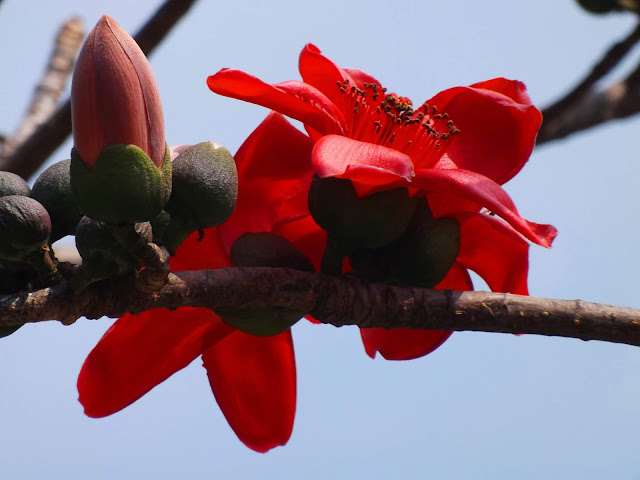Keya or Fragrant screw-pine, Pandanus odorifer
Keya or Fragrant screw-pine (Pandanus odorifer, family: Pandanaceae) is a robust and erect shrub or small-sized tree, branching from different spots of the stem, found throughout the coastal regions of South and Southeast Asia, Australia and Polynesia. In Bangladesh this bushy and spiny plant can be seen in the sandy sea-shores and canal-side areas of Bangladesh. It is found abundantly in St. Martin's Island. Nowadays the palm-like tree is cultivated in different spots of Chattogram. The tree can attain a height of 4-5 m.
Other names: Keya kanta, Kewra (Bangla), Keya kathal, Keteki phul (Assamese), Ketaki (Sans), Large screw pine, Screw tree, Kewda, Umbrella tree, Fragrant screwpine.
Leaves are spiny, gigantic, thick, coriaceous, glaucus green, acuminate at the apex, 80-100 cm long and 6-8 cm wide; large and stout incurved spines in the margin. Interestingly there are much more incurved spines in the midrib of the leaves beneath. Flowering time May-October.
Synonyms: Athrodactylis spinosa, Bromelia sylvestris, Eydouxia delessertii, Hasskarlia leucacantha, Keura odora, Keura odorifera, Marquartia leucacantha, Pandanus adduensis, Pandanus albibracteatus, Pandanus alloios, Pandanus ambiglaucus, Pandanus blancoi, Pandanus boryi, Pandanus carnosus, Pandanus chelyon, Pandanus delessertii, Pandanus fascicularis, Pandanus fosbergii, Pandanus globosus, Pandanus hartmanii, Pandanus hendersonii, Pandanus hueensis, Pandanus impar, Pandanus inclinatus, Pandanus incrassatus, Pandanus integriapicis, Pandanus intraconicus, Pandanus karikayo, Pandanus leucanthus, Pandanus linnaei, Pandanus littoralis, Pandanus loureiroi, Pandanus maldivecus, Pandanus millore, Pandanus obtusus, Pandanus odoratissimus, Pandanus odoratus, Pandanus odoriferus, Pandanus phamhoangii, Pandanus projectens, Pandanus remotus, Pandanus reversispiralis, Pandanus rheedei, Pandanus rubricoloratus, Pandanus rumphii, Pandanus semiorbicularis, Pandanus sinensis, Pandanus smitinandii, Pandanus spiralis, Pandanus subcarnosus, Pandanus subcubicus, Pandanus subulatus, Pandanus verus, Pandanus vietnamensis.









দারুণ
ReplyDeletewow
ReplyDeleteWhat is the pandanus tectorious?
ReplyDeleteGood to see you back sir.
ReplyDeleteখুব সুন্দর !
ReplyDeleteসুন্দর !
ReplyDelete